The Abbaye Saint-Wandrille de Fontenelle, located in the commune of Rives-en-Seine in Normandy, is a Benedictine monastery founded in 649 by Saint Wandrille, also known as Wandregisel. A former nobleman from Austrasia, Saint Wandrille established the abbey on land he received with the support of his friend Saint Ouen, Archbishop of Rouen. From its foundation, the abbey became a major center of religious life, scholarship, and culture in the Frankish world.
Click here to read our introduction to Rives-en-Seine (former Caudebec-en-Caux).
Over the centuries, the abbey endured multiple episodes of destruction and revival. In 858, it was devastated during the Viking invasions, forcing the monks to abandon the site. They returned in the 10th century and rebuilt the community under Abbot Maynard. The abbey suffered again during the Wars of Religion in the 16th century and was later suppressed during the French Revolution in 1791, when the monks were expelled and the property was sold.
Monastic life returned in 1894 when Benedictine monks from Ligugé re-established the community. They were forced into exile in 1901 due to secularist laws but returned in 1931 and have remained there ever since. The community today numbers around thirty monks, who follow the Rule of Saint Benedict. They support themselves through work that includes restoration of artworks and the brewing of beer—the only monastic beer produced in France.
Architecturally, the abbey reflects the long and layered history of its occupation. The ruins of the medieval Gothic church remain impressive, and the Gothic cloister is one of the very few still standing in Upper Normandy.
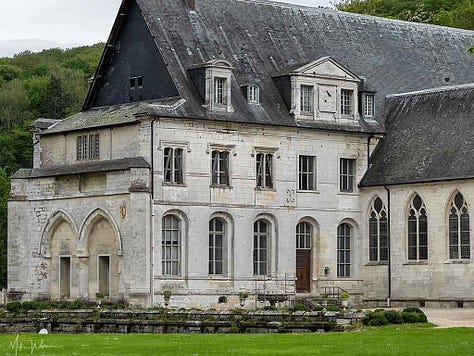
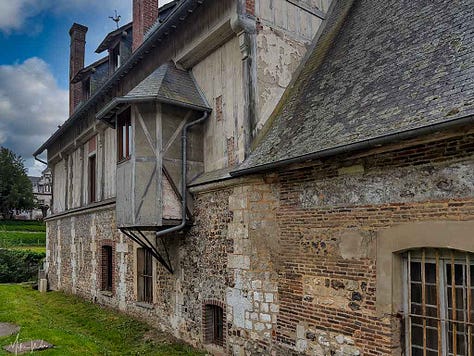
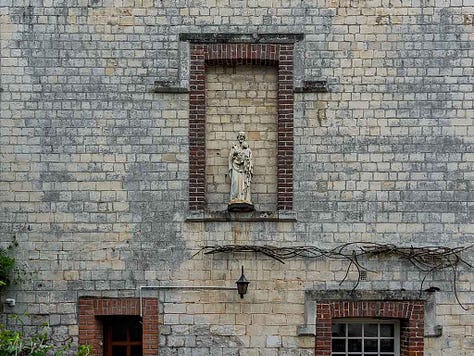
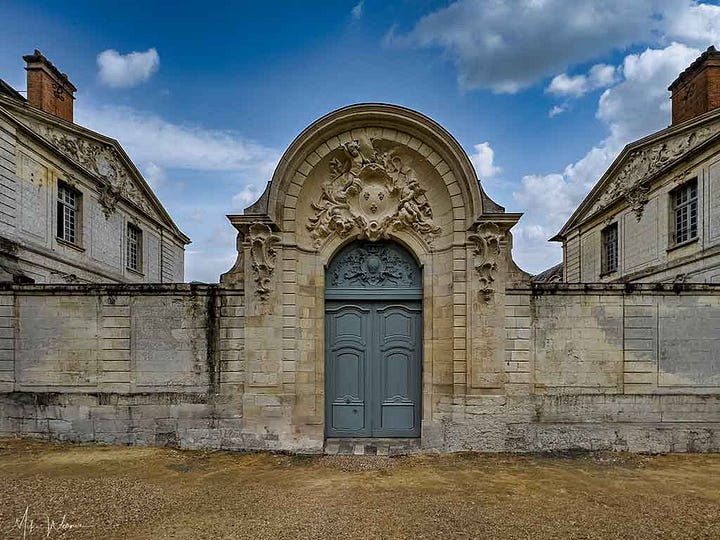
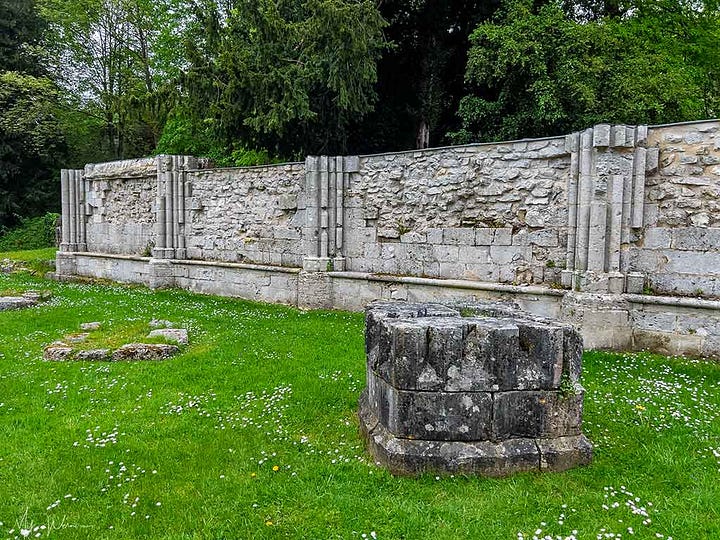
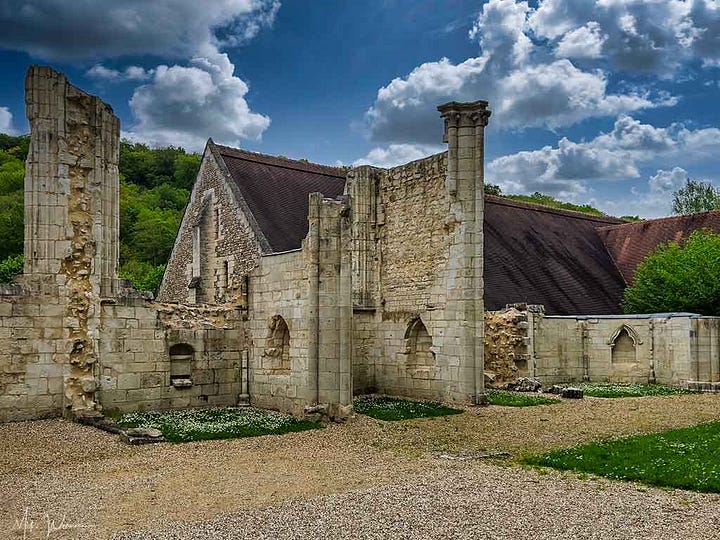
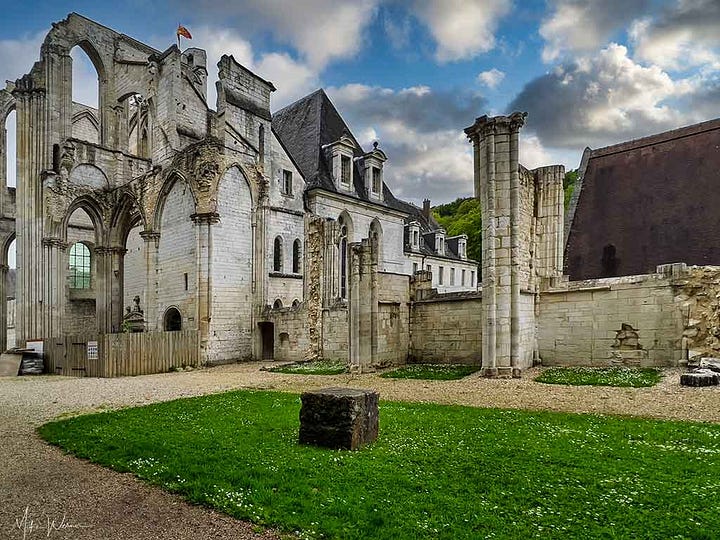
The buildings of the Abbaye Saint-Wandrille de Fontenelle in Rives-en-Seine reflect over a thousand years of continuous, though interrupted, monastic presence. What remains today is a mix of ruins and functioning structures that tell the story of both destruction and resilience.

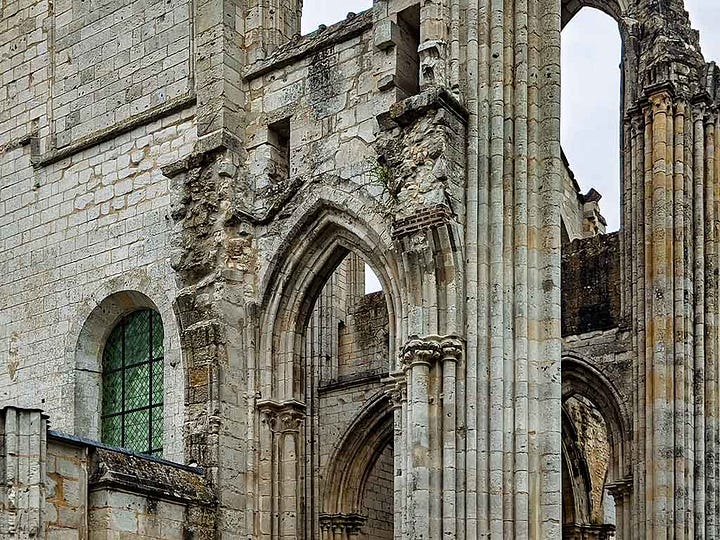
The most striking feature is the ruined Gothic church, begun in the 13th century and never fully completed. This church was heavily damaged over the centuries, particularly during the Wars of Religion in the 16th century. Though roofless, the tall stone arches, ribbed vaults, and carved capitals still stand, giving a clear impression of its former grandeur. These ruins are open to visitors and form a dramatic centerpiece of the abbey complex.
Adjacent to the ruins is a complete Gothic cloister, one of the very few in Upper Normandy that has survived in such condition. This cloister is still in use by the monastic community and connects the various monastic buildings, providing a quiet and sheltered space for prayer and reflection. The precision of the stonework and the elegance of the arcades reflect the craftsmanship of the late medieval period.
Another important building is the Chapel of Saint Saturnin, which dates back to the early years of the abbey and is considered one of the oldest surviving parts of the site. It has been preserved and restored over time and remains a space of active worship. Its simplicity contrasts with the later Gothic structures, but it holds great historical and spiritual significance.
Église Abbatiale Saint-Pierre et Saint-Wandrille

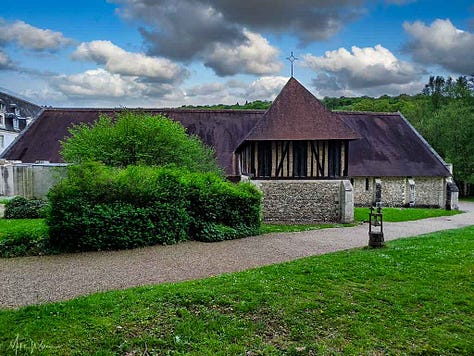
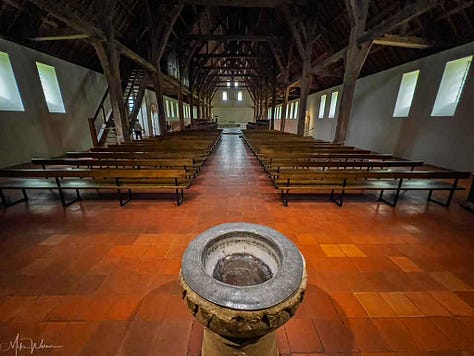
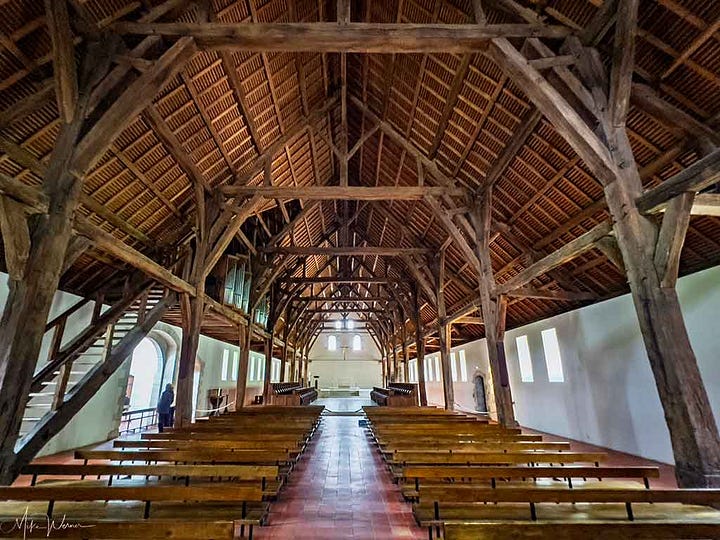

The Église Abbatiale Saint-Pierre et Saint-Wandrille, located within the Abbaye Saint-Wandrille de Fontenelle in Rives-en-Seine, serves as the current monastic church for the Benedictine community. It is not the original medieval abbey church, which remains in ruins nearby. This present church was established in the 20th century after the return of the monks in 1931, following their earlier exile due to anti-clerical laws in France.
The building itself was created using parts of the old monastic structures, especially from the former refectory, which was adapted and consecrated for use as the abbatial church. The transformation was done with care and reverence, maintaining a sober architectural style consistent with Benedictine simplicity. The church includes Romanesque and Gothic elements drawn from various salvaged parts of the abbey, integrating older stonework and vaulting wherever possible.
Inside, the church features a wooden choir stall, an austere altar, and minimal ornamentation in keeping with monastic ideals. Its function is liturgical rather than monumental; it is designed to serve the spiritual needs of the community through the daily rhythm of the Divine Office, Mass, and silent prayer. The church is active and central to the life of the abbey, marking the continuity of monastic worship on the site since its original foundation in the 7th century.
Chapelle Notre-Dame de Caillouville
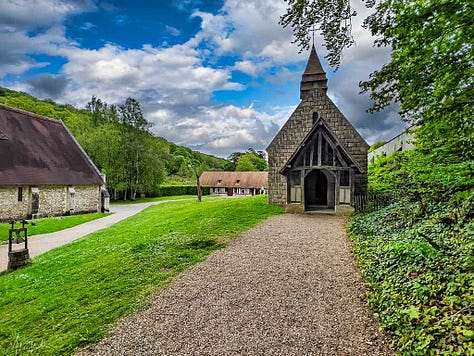
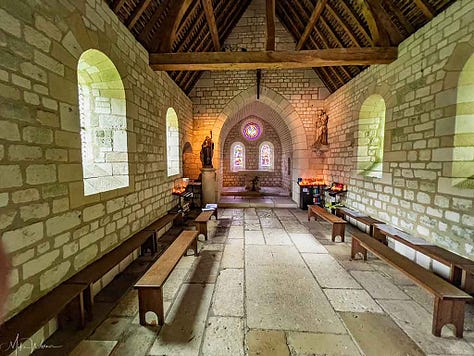
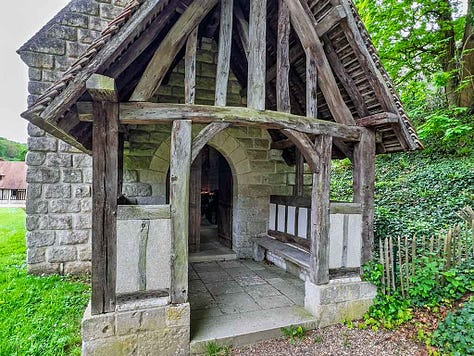
The Chapelle Notre-Dame de Caillouville is a historic and devotional chapel. Its origins are both spiritual and deeply personal to the monastic community.
The construction of this chapel, dedicated to Our Lady, was the result of a vow made by Abbot Dom Gabriel Gontard on August 15, 1944, following the bombing of the monastery during the Second World War. As a gesture of gratitude and faith, the community committed to building a chapel if the abbey was spared further destruction. From 1952 to 1958, the monks of the abbey built it with their own hands. It was consecrated on June 16, 1977.
The chapel is modest in scale and design, consistent with the Benedictine tradition of simplicity and purpose. It consists of a single nave covered by a wooden roof structure, preceded by a porch, and a choir with a flat chevet. A small bell tower rises above the lower part of the nave, marking its presence in the landscape without ostentation.
Inside, the stained glass windows are both artistic and symbolic. They depict three scenes: Our Lady of the Angels, Saint Wandrille healing his adversary at the Fontenelle springs, and Dom Gontard with his monks offering the votive chapel to the Virgin Mary. These images reinforce the chapel’s identity as a place of thanksgiving, prayer, and remembrance, intimately tied to the life and history of the monastic community. The chapel continues to serve not only as a place of worship but also as a visible sign of the abbey's enduring faith through times of trial.
Residential buildings
The residential buildings currently used by the monks were either constructed or restored in the 20th century. These include living quarters, a library, a scriptorium, and workshops. While they are more functional in design, they maintain harmony with the historical setting. The monks have also created a brewery on the grounds, housed in modest but modern facilities, from which they produce the only monastic beer brewed in France.
Throughout the site, you can see the traces of older foundations, modifications, and restorations that document the layered history of the abbey. While not all original buildings have survived, those that remain—whether in ruin or restored—testify to the importance of the abbey in Normandy’s religious and architectural heritage.
The abbey can be visited, and they even have a store where you can buy their brewed beer.
Click here to access their website.




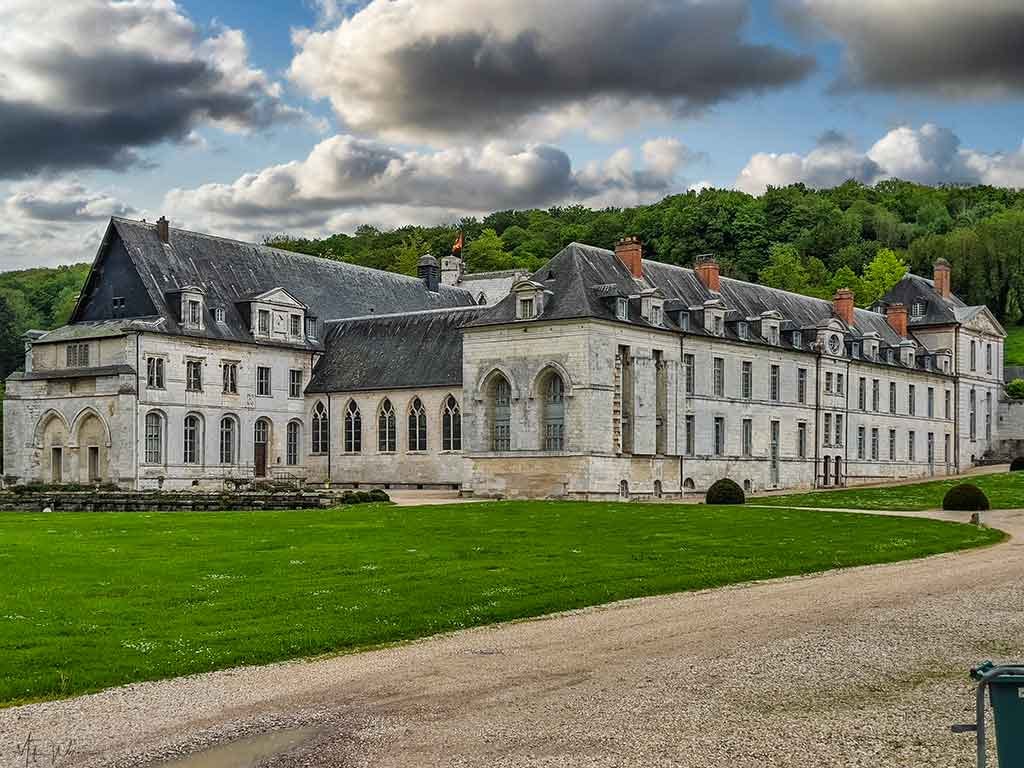
Beautiful photos as always. I quite like the new church, actually. And I'm getting your newsletter by email again -- the unsubscribe/resubscribe worked.